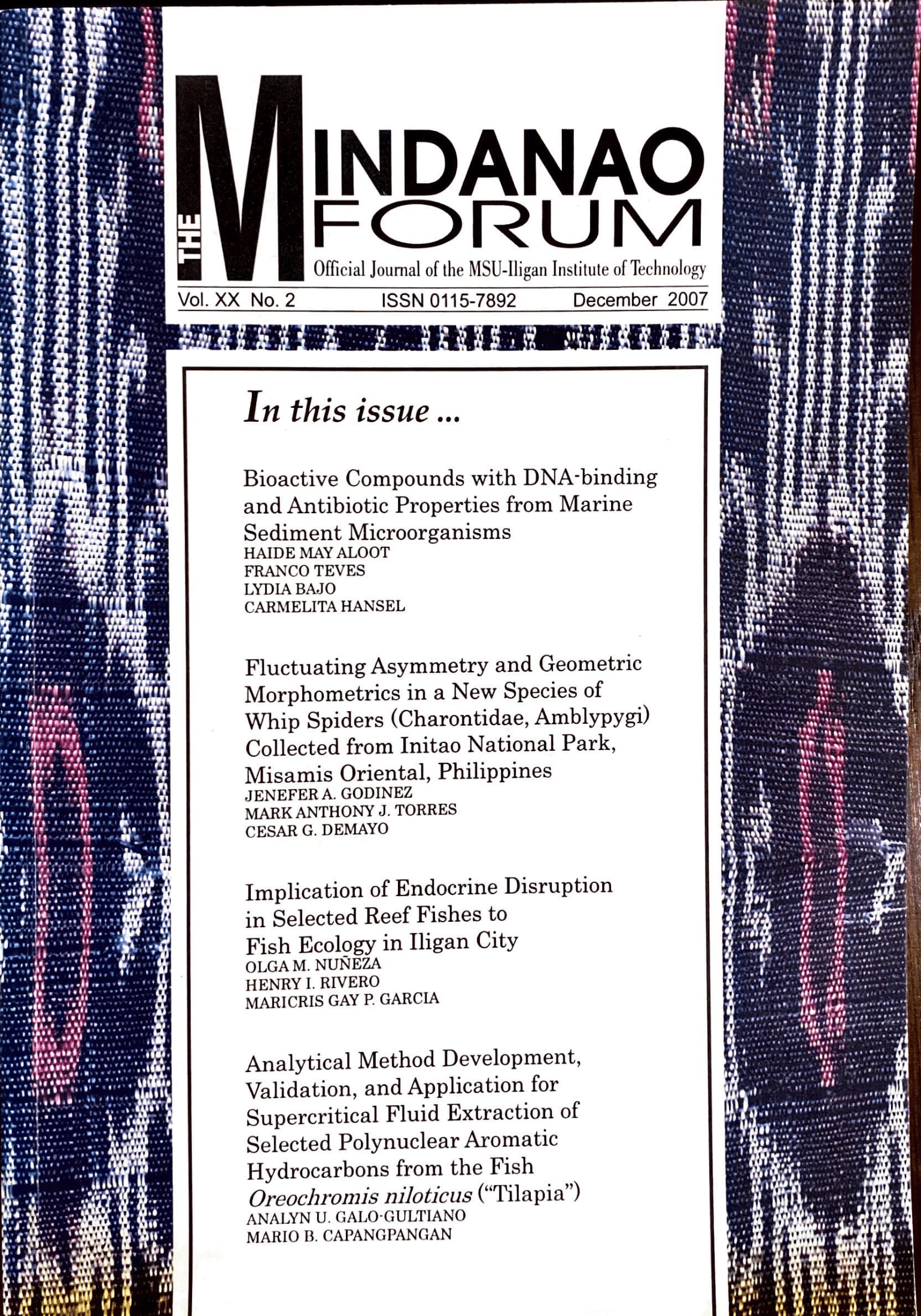Genital Staphylococca Flora in Women of Reproductive Age
Abstract
Self-collected vaginal swab specimens of 156 reproductive aged women of Iligan City were taken during the period of December 2005 to December 2006 to isolate staphylococcal strains. Only one hundred fifty. four clinical specimens exhibited positive bacterial growth on mannitol salt agar where 237 isolates were randomly picked. The isolates were subjected to conventional microbiological tests: cultural, morphological, and physiological (mannitol salt fermentation, catalase and coagulase tests) characterizations where 121 Staphylococcus aureus and 116 coagulase-negative staphylococci (CoNS) were presumptively identified. Different categorical variables were identified as probable risk factors, however, staphylococcal colonization was found to be not associated with any of these identified categorical factors.
All presumptively identified S. aureus were tested for their phenotypic profiles against oxacillin (1 μg), cefoxitin (30 μg), vancomycin (30 μg), erythromycin (15 μg), and clindamycin (2 μg). Vancomycin was found to be the most effective among the five antibiotics being able to have only nine percent (11/121) resistant isolates while erythromycin have displayed the least efficiency by having almost half of the isolates resistant to it (48%). In addition, majority of the isolates (56%) were susceptible dose dependent to clindamycin implying that clindamyin works in borderline efficiency. Eighteen isolates were detected as true methicillin-resistant S. aureus (MRSA) strains being resistant to both oxacillin and cefoxitin. Erythromycin-induced clindamycin resistance, on the other hand, was exhibited by five of the isolates. Half of the confirmed MRSA isolates (9/18) were multidrug-resistant S. aureus (MDRSA) and these isolates could probably be of nosocomial origins while the other nine non multidrug-resistant MRSA (NMD-MRSA) were assumed to be community-associated. Detection of S. aureus and MRSA has shown that these strains can be isolated from the vagina of asymptomatic women. Statistically, there is no significant correlation between the subgroups and the identified risk factors and the susceptibility patterns of the S. aureus strains.





